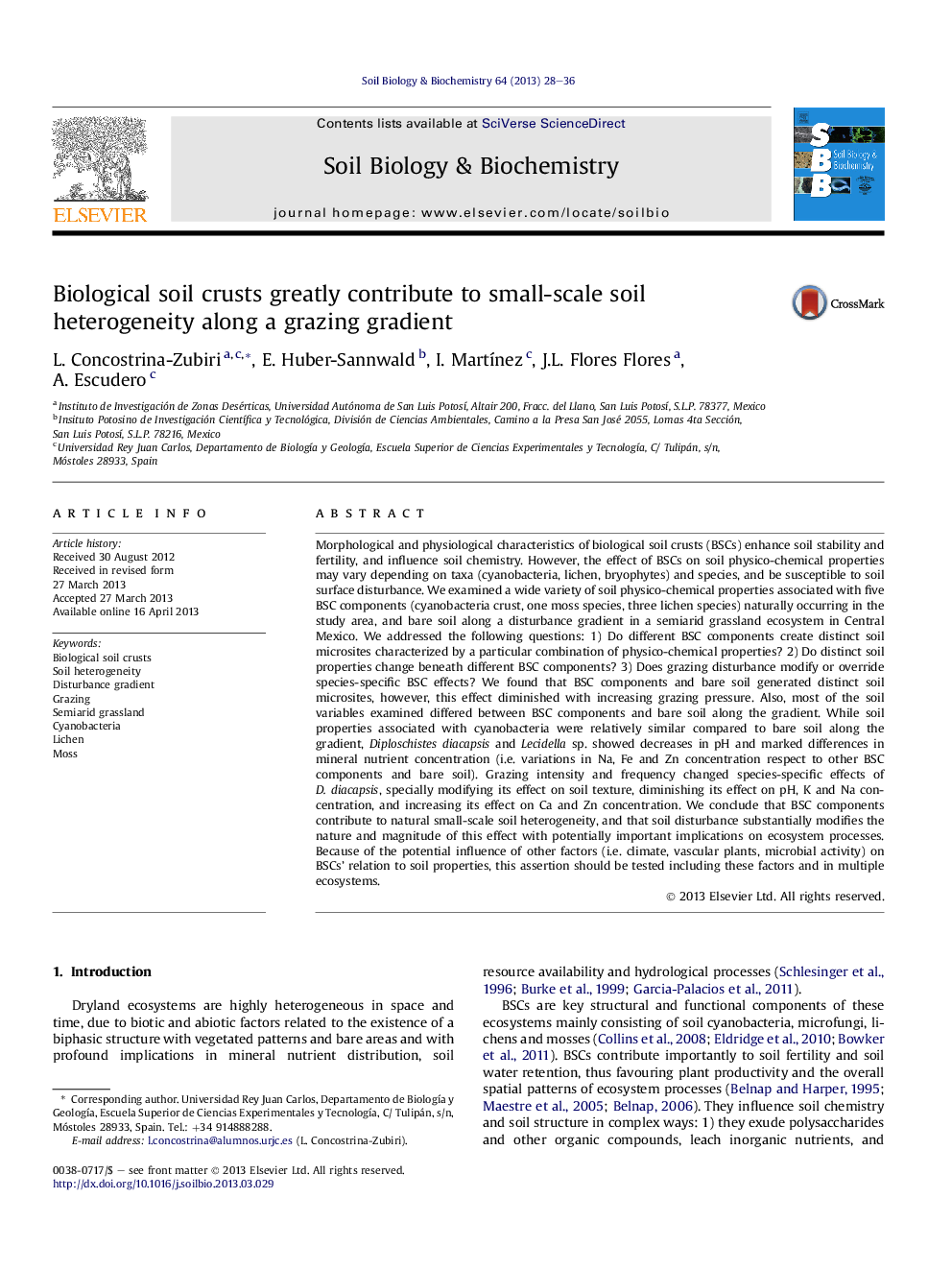| Article ID | Journal | Published Year | Pages | File Type |
|---|---|---|---|---|
| 2024759 | Soil Biology and Biochemistry | 2013 | 9 Pages |
Abstract
Morphological and physiological characteristics of biological soil crusts (BSCs) enhance soil stability and fertility, and influence soil chemistry. However, the effect of BSCs on soil physico-chemical properties may vary depending on taxa (cyanobacteria, lichen, bryophytes) and species, and be susceptible to soil surface disturbance. We examined a wide variety of soil physico-chemical properties associated with five BSC components (cyanobacteria crust, one moss species, three lichen species) naturally occurring in the study area, and bare soil along a disturbance gradient in a semiarid grassland ecosystem in Central Mexico. We addressed the following questions: 1) Do different BSC components create distinct soil microsites characterized by a particular combination of physico-chemical properties? 2) Do distinct soil properties change beneath different BSC components? 3) Does grazing disturbance modify or override species-specific BSC effects? We found that BSC components and bare soil generated distinct soil microsites, however, this effect diminished with increasing grazing pressure. Also, most of the soil variables examined differed between BSC components and bare soil along the gradient. While soil properties associated with cyanobacteria were relatively similar compared to bare soil along the gradient, Diploschistes diacapsis and Lecidella sp. showed decreases in pH and marked differences in mineral nutrient concentration (i.e. variations in Na, Fe and Zn concentration respect to other BSC components and bare soil). Grazing intensity and frequency changed species-specific effects of D. diacapsis, specially modifying its effect on soil texture, diminishing its effect on pH, K and Na concentration, and increasing its effect on Ca and Zn concentration. We conclude that BSC components contribute to natural small-scale soil heterogeneity, and that soil disturbance substantially modifies the nature and magnitude of this effect with potentially important implications on ecosystem processes. Because of the potential influence of other factors (i.e. climate, vascular plants, microbial activity) on BSCs' relation to soil properties, this assertion should be tested including these factors and in multiple ecosystems.
Keywords
Related Topics
Life Sciences
Agricultural and Biological Sciences
Soil Science
Authors
L. Concostrina-Zubiri, E. Huber-Sannwald, I. MartÃnez, J.L. Flores Flores, A. Escudero,
